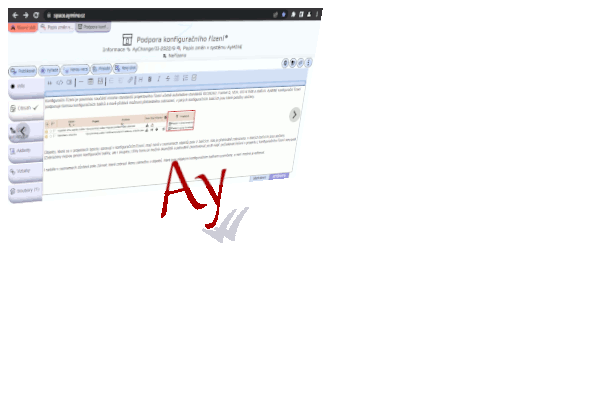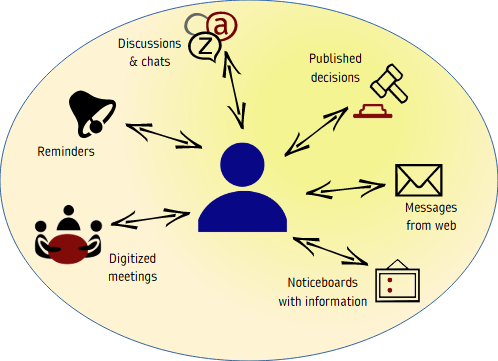Efficient Internal Communication
AyMINE: Clear and Organized Discussions
Effective communication doesn't mean information should not exist or be inaccessible, but that it is available when the recipient needs it.
Internal communication is secure – no fraudulent emails or phone calls.
AyMINE Provides Support for Efficient Communication
Messages and Discussion Groups
- Quick messages between employees – notifications and messages linked to relevant topics
- Discussion groups for addressing complex topics online, reviewing proposals, and conducting revisions
- Digitized Meeting Management – automated preparation and sharing of agendas, and subsequent minutes of the meeting.
Intranet and Bulletin Boards
- Disseminating information about decisions, including new guidelines (although more efficient methods are recommended)
- Dynamic task management integrated with methodologies and workflows saves a lot of communication effort
Important Rules for Efficiency
- Information only for those concerned
- Shared in a simple manner
Communication and Information Sharing in AyMINE
- Quick messages between employees – notifications and messages linked to relevant topics
- Logs of individual activities – a detailed record easily accessible to everyone
- Automatically generated information about notifications
- Document Management
- Effective communication is further enhanced through automation within supported processes, such as: Automatic task delegation: Employees automatically receive information about new or reassigned tasks without requiring additional communication. Voting: When decisions need to be made in the company, project, or team, open a vote and select participants. Everyone involved is automatically informed of the voting process, options, and results. Guideline Updates and Decisions: Each directive or decision includes a list of affected individuals, who can be automatically notified without manual efforts. Meetings: The system automates all communication related to meetings, from invitations to agenda sharing, in-meeting activities, and minutes recording. Web Forms: Feedback, complaints, whistleblowing, GDPR queries, job applications – the company should have web forms for direct communication. The system accepts inputs from forms and automatically creates tasks, notifying the relevant staff.
Eliminate Internal Emails
- Separate internal and external communication.
- Significantly reduce the risk of internal information leaks.
- Clear information sharing prevents oversight.
- Use task tracking to monitor team members' progress without requiring updates from them.
- Assign tasks seamlessly via workflow without needing to write about them.
Save Time on Emails
- Employees don't need to "cover themselves" by proving that something was shared or done.
- Emails are unnecessary when it's clear who did what and when.
Publish Information on Bulletin Boards
Post information to a public bulletin board (e.g., official noticeboard) or intranet page with one click.
Bulletin Board Access
- To anyone on the internet
- To authenticated users on the intranet
- To a specific group of users
Internal Bulletin Boards Are Effective
- Create intranet pages for company information.
- Each department can post answers to frequently asked questions.
- Keep important information accessible.
Messengers were once an excellent invention. Use their advantages in a modern form.
Send reminders that gently nudge without disrupting.


Tools for communication with the public and business partners
Let me show you, try or start using
- Create a corporate account and you can start working immediately.
- We create an account for you and at the same time enter into a unilateral agreement with you to protect your data.
- We guarantee that all data is strictly protected and placed on servers in the European Union.

 Internal helpdesk
Internal helpdesk CRM
CRM Information Management
Information Management Task Management
Task Management CMS – web administration
CMS – web administration Czech-Ukrainian communication
Czech-Ukrainian communication